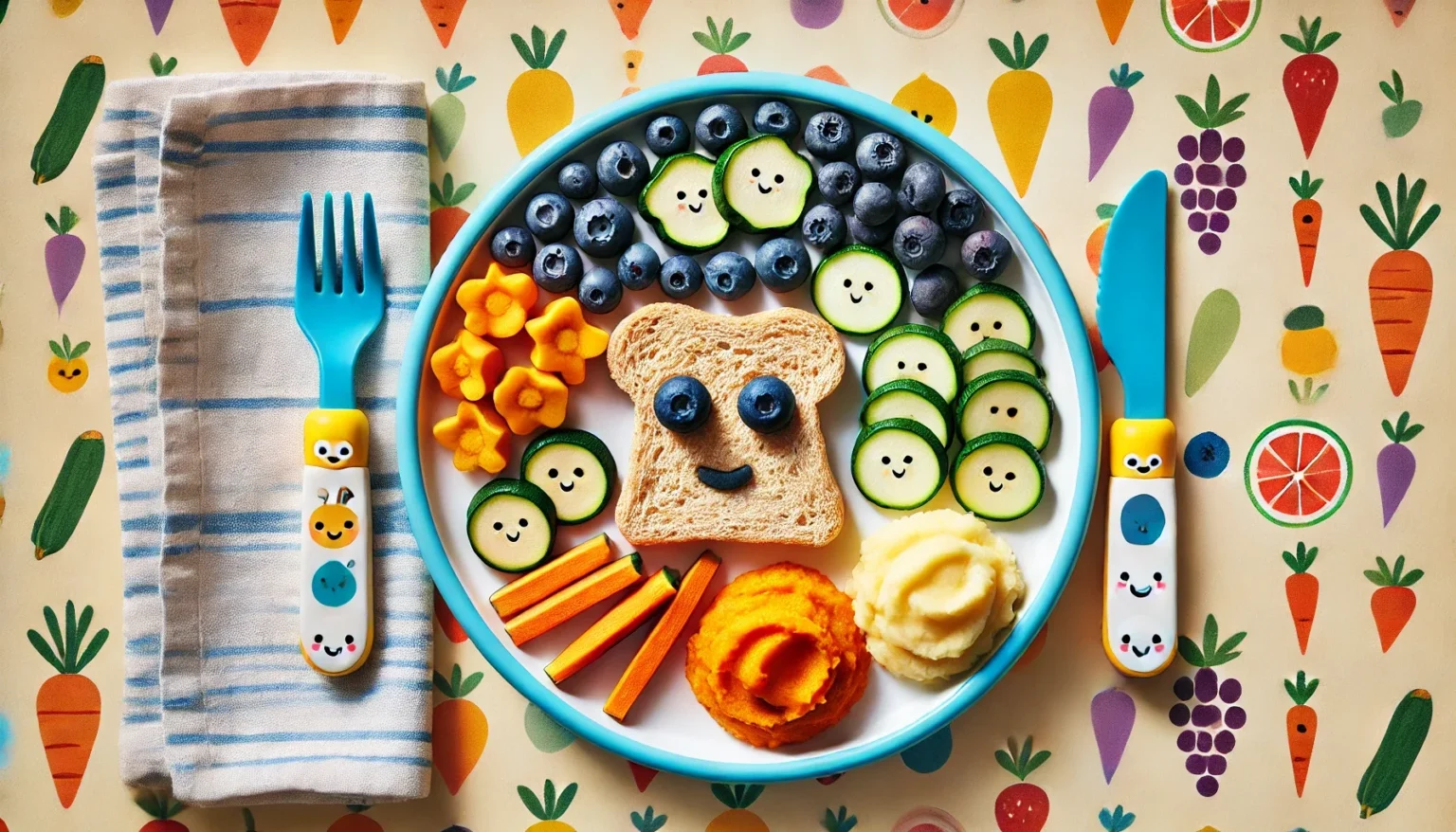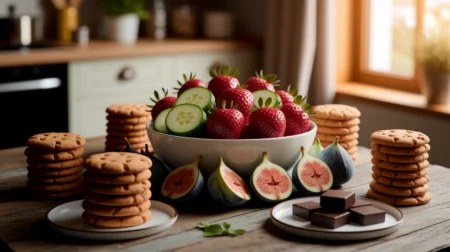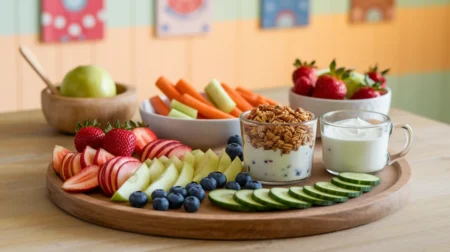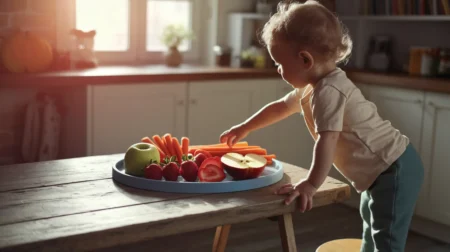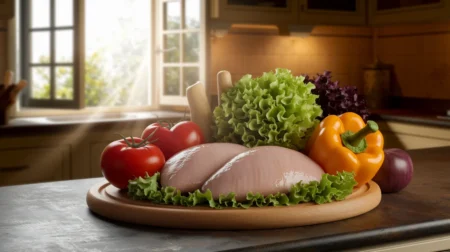Healthy Food for 2-Year-Olds: Nutrition and Balanced Meals
Key Takeaways
- Healthy food for 2-year-olds should focus on a variety of nutrient-dense options that support growth and development.
- Offering balanced meals for toddlers ensures they receive adequate vitamins, minerals, and energy throughout the day.
- Choosing healthy food for toddlers promotes lifelong eating habits that emphasize whole foods and minimize processed options.
The Importance of Healthy Food for 2-Year-Olds
At 2 years old, children experience rapid growth and development. Proper nutrition during this period is crucial to fuel their bodies and brains. Providing healthy food for 2-year-olds not only supports their physical development but also encourages healthy eating habits for life. Offering a mix of proteins, fruits, vegetables, dairy, and grains as part of balanced meals for toddlers ensures that they receive essential nutrients for strong bones, a robust immune system, and optimal cognitive development.
Understanding Toddler Nutrition
When planning meals, it’s important to consider food for 2-year-olds that provides essential nutrients without excess sugar, salt, or unhealthy fats. Aim for meals that are colorful, varied, and composed of foods from all major groups. Here are some key aspects to focus on:
- Protein: Lean meats, beans, eggs, and dairy products help build muscle and support growth.
- Fruits and Vegetables: Fresh produce offers vitamins, minerals, and fiber necessary for healthy digestion and immunity.
- Whole Grains: Foods like oatmeal, brown rice, and whole-wheat bread provide long-lasting energy.
- Dairy: Milk, yogurt, and cheese are important for bone health.
Best Healthy Food for 2-Year-Olds
Here’s a list of nutritious food for 2-year-olds that can be incorporated into everyday meals:
1. Breakfast Options
- Oatmeal with Fruit: Cook oats and top with chopped bananas, berries, or apples.
- Scrambled Eggs with Spinach: A great source of protein and iron.
- Whole-Grain Toast with Nut Butter: Offers protein and healthy fats.
2. Lunch Ideas
- Turkey and Cheese Roll-Ups: A protein-packed meal that’s easy for toddlers to handle.
- Mini Veggie Quesadillas: Add cheese and vegetables like peppers and zucchini.
- Healthy Soups: Make vegetable or chicken soup to introduce a variety of textures and nutrients.
3. Snacks
- Fruit Salad: Mix berries, melon, and sliced grapes for a refreshing snack.
- Yogurt Parfaits: Layer plain yogurt with fruit and granola for added fiber.
4. Dinner Choices
- Baked Salmon with Sweet Potatoes: Provides omega-3 fatty acids and fiber.
- Mini Meatballs with Steamed Veggies: Easy to eat and packed with protein.
- Rice and Beans: A complete protein source that’s budget-friendly.
When preparing healthy food for toddlers, it’s essential to avoid added sugars, excess salt, and processed ingredients. Simple and natural flavors often appeal most to children at this age.
Encouraging Balanced Meals for Toddlers
To make meals both nutritious and enjoyable, try incorporating some of these strategies:
- Offer Variety: Rotate foods frequently to expose toddlers to new tastes and textures.
- Involve Your Child: Allow your 2-year-old to help with simple meal prep, like washing vegetables or stirring ingredients.
- Portion Control: Serve small portions, and let children ask for more if they’re still hungry. This encourages self-regulation.
- Make Food Fun: Use cookie cutters to make shapes out of fruits, vegetables, or sandwiches.
Providing healthy food for 2-year-olds is not just about nutrition—it’s about creating positive associations with eating. Making mealtime fun, relaxed, and interactive will help build a strong foundation for healthy eating habits.
Age-Specific Foods: Food for 3-Year-Olds vs. 2-Year-Olds
While food for 3-year-olds and food for two year olds may overlap, slight adjustments can be made to accommodate growing appetites and refined motor skills. Three-year-olds often enjoy more independence and might express specific preferences. Meals for both ages should remain balanced and varied but can offer more complex textures and flavors as children grow.
What to Feed 3-Year-Olds
- Healthy Food for 3-Year-Olds: This age group may enjoy foods like whole-grain pasta with tomato sauce, roasted veggies, or baked chicken strips.
- Balanced Meals for Toddlers: Continue offering a mix of food groups, but allow 3-year-olds more input in meal choices.
- Healthy Food for Toddlers to Eat: Always prioritize nutrient-dense options and minimize processed snacks and drinks.
Tips for Offering Healthy Food for Toddlers
- Healthy Eating Art Activities for Preschoolers: Engage your child by turning mealtime into an art project, like arranging fruits into a rainbow.
- Healthy Food Crafts: Encourage your child to “build” their meal, using healthy ingredients like veggies and fruits to create faces or animals on their plate.
Common Questions About Toddler Nutrition
What are some examples of balanced meals for toddlers?
Balanced meals might include baked chicken, brown rice, and a side of carrots, or a veggie-stuffed quesadilla with a fruit cup.
What should I avoid when preparing food for toddlers to eat?
Avoid high-sugar snacks, excessive salt, and foods that pose choking hazards, such as whole grapes, nuts, or hard candies.
What are the healthiest foods for toddlers?
The healthiest options include lean proteins, fruits, vegetables, whole grains, and dairy. Focus on whole, minimally processed foods.
How do I ensure healthy food for 2-year-olds is interesting?
Involve your child in the cooking process, use fun shapes, and serve colorful meals to keep their interest and excitement high.





